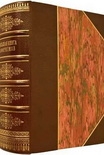Nature Noir, Jordan Smith [early reader chapter books .txt] 📗

- Author: Jordan Smith
Book online «Nature Noir, Jordan Smith [early reader chapter books .txt] 📗». Author Jordan Smith
The dust got into the thumb breaks of our holsters, and pretty soon our guns wouldn't come out. It found its way deep into the works of our pistols, where it combined with gun oil to form a brown deposit on the sear release levers, recoil spring guides, firing-pin springs, and decocking levers. We would fieldstrip and clean our weapons, but the dust went deeper than fieldstripping could reach.
Once a year the department's armorer would show up at our ranger station to inspect our guns. One by one, he'd disassemble them, and you could see him shaking his head and lifting his elbows as he applied himself to cleaning out the brown gunk. After a couple of days of this, still shaking his head, he would depart. And in the aftermath of his visits none of us ever received one of those congratulatory memos from headquarters for exemplary care of our equipment, as rangers did in those tidy little nature parks with neat little campgrounds on paved roads and no bullet holes in the signs.
At the district maintenance shops, mechanics looked up wearily on the approach of one of our squeaky Jeeps or Jimmies. The dust clogged air filters; it made a mockery of seals; it sullied lubricants and wore out bearings. It made our spotlights narcoleptic; alone after midnight on a vehicle stop, you'd twist the interior handle and flick on the switch and the light would remain asleep, face-down on the hood of your car.
The dust conspired with the rough roads to gain entry into the farthest reaches of our vehicles' interiors. After thirty or forty thousand miles, each new patrol wagon began its complaint of rattles and squeaks, and as its tailgate loosened and the dust worked its way past the gaskets, you'd see it rising behind you like smoke in your rear-view mirror and taste the grit on your teeth. Once inside, it made its way through the cracks around the doors of the plywood equipment cabinets behind the back seats and then crept through the zippers of our rescue packs, where it polluted sterile bandages, trauma shears, stethoscopes, oxygen masks, and whole sets of airways.
And so in my first summer in the Sierra Nevada foothills I learned to swathe my rescue gear in clear plastic trash can liners from the park maintenance shop. The wide, flat brim of my ranger hat served admirably to shield my face from the searing sun, but our cowboy-cut uniform jeans bound my sweaty legs so I could barely walk uphill. I learned to buy a kind of green jeans that looked official but were loose in the legs and seat, and to cut the label off the back pocket so my subterfuge was not detected. I began carrying at least two quarts of water and drinking it constantly. I learned to breathe through my nose and acquired an obscure yogic trick of drawing water into my nostrils from my cupped hands several times a day and forcibly expelling it to blow the mud out.
I learned that heat and dust made people testy, so I kept a tight leash on myself when things got tense. But there was little I could do to control their effect on others, and a good many of the men I met in the American River canyons carried guns (in case of rattlesnakes, they always told me), so I wore my bulletproof vest every day. The vest retained heat in the worst way, but I learned to discipline my mind so as not to be panicked by the claustrophobic discomfort of it. Whenever I had to talk to someone or take a report, I learned to walk to the shade of an overhanging tree and beckon to my reporting party to join me there. By the end of a string of summer workdays I would commonly have lost five to seven pounds through dehydration; I gained them back on my days off. I was leaving a brown stain on my bed sheets, so I began showering before bed and washing the sheets every other day. But the stain appeared anyway, and persisted for weeks in the late autumn, even after the rains had settled the dust. Evidently the dust had gone deep into the pores of my skin, and I suspect even now my body contains some of it.
Although my summer habits resembled those of any desert ranger, the foothills of the Sierra Nevada are in no way a desert. Deserts are often defined as regions that receive fewer than ten inches of rain a year, and my part of the American River gets over thirty-four at its lower-elevation, southwestern boundary and over fifty on the higher ground to the northeast. By comparison Seattle averages only thirty-eight. But in Seattle the rain comes year-round, and on the American River almost all of it falls between November and April.
Perched on the 39th parallel, the American River country is neither a southwestern desert nor a northwestern rain forest. Instead it is claimed alternately by season, a sort of Alsace or Lorraine—those European provinces taken by France in the 1300s, won back by the Germans in the Franco-Prussian War, and lost again to France at Versailles in 1919.
In our hot, dry summers and in the sort of dry, scrubby vegetation you see on our south-facing canyon walls, this country belongs to the great Southwest—dusty, parched, and baking, the leaves of its prickly brush and tree species coated with layers of waxy stuff to seal in their moisture. But in the rainy winters and in the lush coniferous forests of our north-facing slopes and shady side canyons, the American





Comments (0)